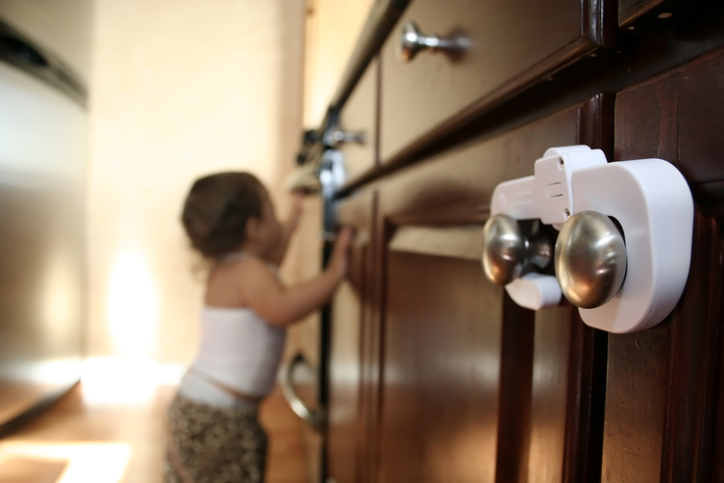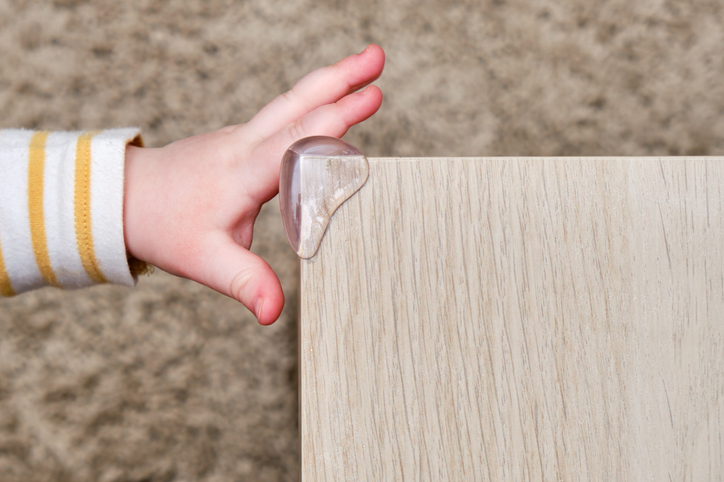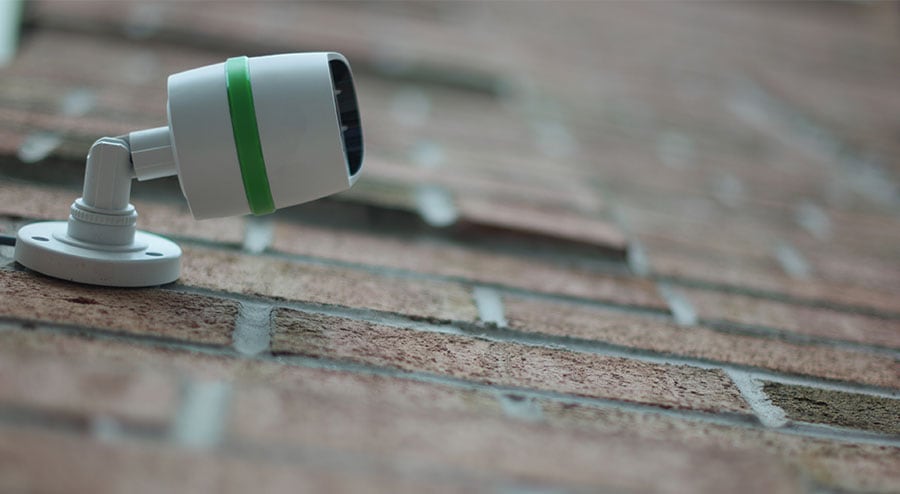Home accidents can happen unexpectedly and may lead to serious injuries or property damage so creating a safe and secure living environment should be a top priority for every homeowner. With proper knowledge of the most common causes of household mishaps and by practicing practical safety and preventative measures, many accidents can be avoided.

Home safety consists of considerations regarding slips and falls, electrical hazards, kitchen mishaps, potential outdoor risks, carbon monoxide safety, and the importance of childproofing for families with young children. Whether you are a seasoned homeowner or a new resident, taking simple steps like installing safety devices and understanding the best safety practices to more comprehensive measures like knowing when to seek professional help for complex repairs allows you to protect your household, be informed about potential risks and create a secure and accident-free living space.
Preventing Slips, Trips, and Falls
Overall household safety includes taking steps towards not only identifying potential hazards but also implementing a variety taking safety measures to decrease the risk of accidents throughout your house.
Identifying Potential Hazards in the Home
Conducting a thorough inspection of your home to identify potential hazards that could lead to slips, trips, and falls is the first step. Look for loose rugs or carpets, uneven flooring, and cluttered walkways. Pay special attention to areas like bathrooms, kitchens, and staircases, as these are common hotspots for accidents.
Safety Measures to Reduce the Risk of Slips and Falls
Implementing some simple safety measures such as installing handrails along staircases and ensuring they are securely fastened can significantly reduce the risk of slips and falls in your home. Apply non-slip strips or rubber mats to bathroom floors and bathtubs to prevent accidents, especially in wet conditions. Keep floors dry and clean spills immediately to avoid slipping hazards.
Securing Rugs and Carpets, Using Non-Slip Mats
Invest in double-sided tape or non-slip rug pads to keep them firmly in place and prevent tripping over loose rugs or carpets. These affordable products can be found at most home improvement stores and online retailers, with prices ranging from $10 to $30 depending on the size and material.
Ensuring Proper Lighting and Clear Pathways
Preventing accidents in areas with poor visibility by installing proper lighting such as bright, energy-efficient LED light bulbs in hallways, staircases, and entryways to ensure clear visibility during the day and night. Keep pathways and walkways free from obstacles and clutter to minimize the risk of tripping over objects.
Keeping Stairways Safe and Secure
Take extra precautions to make staircases safe such as installing sturdy handrails on both sides of the staircase and ensuring they are firmly anchored to the wall. Consider using contrasting colors for the edge of each step to improve visibility. Additionally, use anti-slip adhesive strips or treads on each step to provide extra traction and reduce the likelihood of slipping on stairs.
Taking these precautionary measures creates a safer living environment, reducing the risk of slips, trips, and falls in your home. The costs associated with these safety measures are relatively low compared to the potential consequences of accidents, making them a worthwhile investment in ensuring safety.
Electrical Safety at Home
There are numerous safety hazards surrounding electrical equipment. Be sure to understand these hazards and their consequences and be prepared to take the necessary steps to reduce the risk of related accidents.
Understanding Electrical Hazards and Their Consequences
Electrical hazards and risks in the home range from electric shocks to potentially life-threatening fires. Faulty wiring, overloaded circuits, damaged appliances, and exposed electrical components are common sources of these dangers. It is crucial to be aware of these hazards and their potential consequences to take appropriate preventive measures.
Safety Tips for Handling Electrical Appliances and Cords
Always follow the manufacturer’s instructions and guidelines when using electrical appliances. Avoid using damaged cords or appliances, as they can lead to electrical malfunctions and accidents. Unplug appliances when not in use, and never overload outlets or power strips, as this can lead to overheating and electrical fires.
Importance of Regular Maintenance and Inspections
Regular maintenance and inspections of electrical systems allow you to identify potential hazards early on. Hiring a licensed electrician to inspect your home’s electrical system every few years is a prudent investment in safety. Additionally, make a habit of visually inspecting electrical cords and outlets for signs of wear or damage, and promptly address any issues you find.
Installing Ground Fault Circuit Interrupters (GFCIs)
GFCIs are essential safety devices designed to protect against electrical shocks. They quickly shut off power in the event of a ground fault, preventing potentially deadly electric shocks. Install GFCIs in areas where water and electricity are in close proximity, such as bathrooms, kitchens, laundry rooms, and outdoor outlets. The cost of GFCIs can range from $10 to $50 per outlet, depending on the type and brand.
Childproofing Electrical Outlets
For households with young children, childproofing electrical outlets by inserting plastic outlet covers or sliding plate covers can prevent children from inserting objects into outlets and getting shocked. These outlet covers are widely available at hardware stores, supermarkets, and online retailers, and they typically cost around $5 to $10 for a pack of six to twelve covers.
Understanding the potential risks associated with electricity and implementing these electrical safety measures allows homeowners to significantly reduce the likelihood of accidents and create a safer living environment for themselves and their families. Investing in electrical safety is not only a smart decision for the well-being of your household but also a responsible step toward preventing potential disasters.
Kitchen Safety Tips
The kitchen is an area of any household that poses safety risks ranging from cuts, fire burns, chemical implications and more. Taking precautions in the kitchen is important in ensuring the safety of your family and visitors.
Preventing Kitchen Accidents and Burns
The kitchen can be a source of accidents and burns if proper precautions are not taken when active. Stay vigilant while cooking and never leave a hot stove or oven unattended to prevent mishaps. Use pot holders or oven mitts to handle hot cookware and utensils, and keep flammable items like kitchen towels and curtains away from open flames.
Proper Use and Care of Kitchen Appliances
Misuse or neglect of kitchen appliances such as a blender, microwave, or toaster can lead to accidents. Always read and follow the user manuals for your appliances to understand their proper operation and safety features. Regularly clean and maintain your appliances to ensure they function safely and efficiently. When not in use, unplug small appliances to avoid potential electrical hazards.
Safe Handling of Knives and Other Sharp Tools
Knives and sharp tools can also cause serious injuries if mishandled. Use a cutting board with a stable surface to prevent accidental slips while slicing and dicing. Keep knives sharp, as dull blades can slip and lead to accidents. When not in use, store knives in a designated knife block or magnetic strip, keeping them out of reach of children.
Fire Safety Measures in the Kitchen
Kitchen fires can escalate rapidly, so be sure to have fire safety measures in place such as installing a fire extinguisher in the kitchen and make sure everyone knows how to use it correctly. In case of a grease fire, never use water to extinguish it; instead, use a metal lid or baking soda to smother the flames. Regularly check and replace smoke detectors in the kitchen to ensure they are functioning properly.
Keeping Cleaning Agents and Chemicals Out of Reach
Cleaning agents and chemicals should be stored securely and out of reach of children and pets. Use childproof locks on lower cabinets where cleaning supplies are kept. Consider using locked storage cabinets for hazardous chemicals, and always follow the instructions on the product labels for proper use and storage.
Implementing these kitchen safety tips reduces the risk of accidents and creates a safer cooking environment. Remember that awareness, caution, and responsible practices are key to preventing kitchen-related injuries and ensuring a safe culinary experience for everyone in your household.
Childproofing Your Home
In creating a safe home environment for families with young children, childproofing measures must be taken to ensure their safety. From securing furniture, installing safety gates, identifying choking hazards, and more, precautions must be taken to avoid potential accidents and injuries.
Identifying Potential Risks for Young Children
Children are naturally curious and explorative and its important to childproof your home. Start by getting down to their eye level to identify potential risks that may not be visible from an adult’s perspective. Secure heavy furniture, such as bookshelves and dressers, to the wall to prevent tipping accidents. Keep an eye out for small objects that could pose choking hazards, such as coins, buttons, or small toy parts, and ensure they are out of reach.
Securing Furniture and Cabinets to Prevent Tipping Accidents
Tipping furniture is a common cause of injuries among young children. Use furniture anchors or wall straps to secure large items like bookcases, entertainment centers, and TVs to the wall. These safety devices are widely available at hardware stores and online retailers, with costs ranging from $5 to $20 depending on the brand and pack size. Additionally, install cabinet locks or latches on cabinets and drawers containing potentially hazardous items, such as cleaning supplies or sharp utensils.
Installing Safety Gates and Window Guards
Safety gates serve to block off hazardous areas and staircases and provide a safe space for children to play. Look for gates that meet safety standards and are easy for adults to operate but difficult for young children to open. For stairways, opt for hardware-mounted gates for added stability. Window guards are also essential, especially for windows on higher floors. These guards prevent children from accidentally falling out while still allowing fresh air to circulate. Window guards can be found in various sizes and styles, with prices ranging from $15 to $50 per guard, depending on the type and brand.
Eliminating Choking Hazards and Small Objects
Be thorough when eliminating choking hazards and small objects that could be ingested by young children. Go through each room, paying close attention to areas where small items tend to accumulate, such as under furniture or between sofa cushions. Store small objects out of reach and educate older siblings and visitors about the importance of keeping small toys and items away from younger children.
Creating a Child-Friendly Home Environment
Lastly, use corner guards on sharp furniture edges, choose non-toxic household products, and opt for child-safe window blinds without cords to create a child-friendly home. Soften hard surfaces with rugs or foam mats in play areas to cushion potential falls. Consider placing safety caps on electrical outlets to prevent children from inserting objects into them. With these childproofing measures in place, parents can have peace of mind, knowing their little ones can safely explore their surroundings and grow in a secure environment.
Fire Prevention and Safety
Fires can be avoided by understanding where fires can occur and how to promptly and effectively put them out. Fire prevention measures should always be taken in order to create a safe home and prevent accidents in the event and abense of emergencies.
Understanding Common Fire Hazards in the Home
Fire hazards in the home are a serious concern and potential disasters can be prevented by identifying common fire hazards such as electrical malfunctions, unattended cooking, flammable materials near heat sources, overloaded power outlets, and faulty wiring. Being aware of these risks can help homeowners take proactive measures to reduce the chances of a fire occurring.
Installing Smoke Detectors and Maintaining Them Regularly
Smoke detectors are important for early fire detection and giving occupants time to escape safely. Install smoke detectors on every level of the home, especially near bedrooms and sleeping areas. Regularly test and replace batteries in these devices to ensure they are functioning correctly. It is recommended to replace smoke detectors every 10 years, as their effectiveness diminishes over time. Various brands of smoke detectors are available in the market, with prices ranging from $10 to $30 depending on the features and type.
Fire Extinguisher Placement and Usage
Having a fire extinguisher readily accessible can diffuse small incident fires quickly and prevent a full-blown fire. Place fire extinguishers on each level of the home, particularly in areas where fire hazards are prevalent, such as the kitchen and garage. Choose extinguishers suitable for common household fires (Class ABC). Familiarize yourself and family members with the proper usage of the extinguisher, following the PASS technique: Pull the pin, Aim at the base of the fire, Squeeze the handle, and Sweep from side to side. A good quality ABC fire extinguisher can cost anywhere from $20 to $50, depending on the size and brand.
Educating Family Members about Fire Escape Plans
Be sure to create and practice a fire escape plan so that everyone knows how to respond in case of a fire emergency. Hold a family meeting to discuss escape routes from each room and designate a safe meeting place outside the home. Practice the fire escape plan regularly, especially with young children, to ensure everyone is familiar with the procedures and can execute them calmly in the event of a fire.
Safety Precautions When Using Candles and Heaters
Candles and portable heaters pose fire risks if not used safely. Keep candles away from flammable materials and never leave them unattended. Opt for battery-operated flameless candles for a safer alternative. When using heaters, maintain a safe distance from combustible materials and always turn them off when leaving the room or going to bed. Place heaters on stable, flat surfaces to prevent tipping and potential fires.
By being proactive in fire prevention and safety measures, homeowners can significantly reduce the risk of fires in their homes. These safety practices can save lives and protect property, making them essential for every household to implement and maintain.
Outdoor Safety Measures
Safety should extend to your outdoor spaces as well. Be aware of hazards related to heights, water, electrical equipment, and more when implementing home safety measures.
Securing Outdoor Areas Like Patios and Balconies
Outdoor areas like patios and balconies present potential safety risks that can be mitigated by inspecting and repairing any loose or deteriorating railings promptly. Use childproof safety netting or mesh on balconies and raised decks to prevent young children from squeezing through openings. Secure patio furniture and other items that could be blown around by strong winds to avoid accidents during storms. Regularly check for slippery surfaces, especially after rain, and consider using non-slip mats or coatings to reduce the risk of falls.
Pool Safety Guidelines to Prevent Drowning Accidents
Pools demand strict safety measures, particularly if there are children around. Install a four-sided fence with a self-closing and self-latching gate around the pool, ensuring it is at least four feet high. Use pool alarms to alert you if someone enters the pool area unnoticed. Enroll children in swimming lessons from a young age and ensure that adults supervising pool activities are skilled swimmers. Keep pool chemicals stored securely and out of reach of children to avoid accidents.
Safe Usage and Maintenance of Outdoor Equipment
Outdoor equipment like lawnmowers, trimmers, and power tools can be hazardous if not used and maintained properly. Always read the user manuals and follow safety guidelines when operating outdoor equipment. Wear appropriate personal protective equipment (PPE), such as safety glasses, gloves, and closed-toe shoes, to reduce the risk of injuries. Regularly inspect and maintain outdoor tools to ensure they are in good working condition, and store them safely when not in use.
Ensuring Proper Lighting in Outdoor Spaces
Proper lighting in outdoor areas is important for safety and security, especially for elderly individuals and children. Install outdoor lighting around pathways, stairs, and entryways to prevent accidental trips and falls, especially during the evening or nighttime. Consider using motion-activated lights near entrances and in dimly lit areas to deter potential intruders and improve visibility.
Avoiding Accidental Falls and Injuries While Gardening
Decrease the risks posed by gardening by wearing sturdy shoes with slip-resistant soles to prevent falls and foot injuries. Use appropriate gardening tools and store them safely when not in use. Be cautious when using ladders or stepping on elevated surfaces while gardening and ensure the ground is level and stable. Regularly inspect your garden for hazards such as loose rocks, uneven terrain, or hidden holes, and address them promptly.
Implementing these outdoor safety measures creates a secure environment for outdoor activities and reduces the risk of accidents and injuries. Being proactive in outdoor safety ensures that you and your family can enjoy your outdoor spaces to the fullest while minimizing potential risks.
Carbon Monoxide Safety
Carbon monoxide is a substance that poses high risks to your health and implementing detectors is highly important in preventing the devastating consequences associated with this gas.
Understanding the Dangers of Carbon Monoxide Poisoning
Carbon monoxide (CO) is a colorless, odorless gas that can be deadly when inhaled in high concentrations. It is produced by the incomplete combustion of fuels like gas, oil, wood, and coal. Common sources of CO in homes include gas stoves, furnaces, water heaters, and fireplaces. Understanding the risks of CO poisoning is essential, as symptoms can be mistaken for other illnesses, leading to delayed detection and treatment.
Importance of Carbon Monoxide Detectors
Carbon monoxide detectors are safety devices that provide early warning of CO buildup. Install CO detectors on every level of your home, especially near bedrooms and sleeping areas. Opt for models with digital displays that show CO levels in parts per million (PPM). Kidde and First Alert are reputable brands offering reliable CO detectors, with prices ranging from $20 to $50 depending on features.
Properly Maintaining Gas-Powered Appliances
Regularly maintain gas-powered appliances to prevent CO leaks. Hire a professional technician to inspect and service gas furnaces, water heaters, and stoves at least once a year. Promptly repair any leaks or malfunctioning appliances identified during inspections.
Ventilation and Air Circulation for Safety
Preventing CO buildup indoors with proper ventilation. Ensure that vents for gas-powered appliances are unobstructed and that chimneys and flues are clear of debris. Use exhaust fans when cooking or bathing to improve air circulation. If using fuel-burning space heaters, only use them in well-ventilated areas and avoid keeping them on while sleeping.
Identifying Symptoms of Carbon Monoxide Exposure
You can detect potential leaks by being aware of the symptoms of CO exposure. Early symptoms of CO poisoning resemble flu-like symptoms, such as headaches, dizziness, nausea, and weakness. As CO levels increase, symptoms can progress to confusion, loss of consciousness, and even death. If you suspect CO poisoning or if your CO detector sounds an alarm, leave the building immediately and seek fresh air. Contact emergency services and have a professional inspect your home for CO sources.
Understanding the dangers of carbon monoxide and taking necessary safety precautions, allows homeowners to protect themselves and their families from this silent threat. Installing CO detectors, properly maintaining gas-powered appliances, and ensuring proper ventilation are essential steps to prevent carbon monoxide poisoning and ensure a safe living environment.
DIY Home Repairs and Tool Safety
In looking at home safety, there are other domains to consider and ways to implement proper safety measures in terms of general tools and self-repairs.
Potential Risks of DIY Repairs and Renovations
DIY home repairs and renovations come with inherent risks. Lack of experience and knowledge in handling certain tasks can lead to accidents and injuries. Before taking on a DIY project, assess your skills and the complexity of the task. Some projects, such as electrical work or major structural changes, are best left to professionals to avoid potential hazards.
Using Personal Protective Equipment (PPE) During DIY Projects
Personal Protective Equipment (PPE) is important for safeguarding yourself during DIY projects. When using power tools or working with materials that produce dust or debris, wear safety goggles to protect your eyes. For tasks involving loud noises, such as using power saws, use ear protection. When handling hazardous chemicals or paints, wear gloves and a mask to protect your skin and respiratory system.
Properly Storing and Handling Power Tools
Storing and handling power tools safely is important to prevent accidents and maintain their longevity. Keep power tools in a dry, secure location, preferably in a locked cabinet or toolbox to prevent unauthorized access, especially when children are around. Always inspect power cords for frays or damage before use, and avoid using tools with exposed wiring. When operating power tools, maintain a firm grip and use both hands whenever possible to ensure proper control and balance.
When to Call Professionals for Complex Repairs
Some tasks require the expertise of professionals and can not be done with DIY methods. Complex electrical, plumbing, or structural repairs are best left to licensed contractors who have the necessary training and experience. Attempting complex projects without the right skills can lead to more significant issues and even compromise the safety of your home. When in doubt, consult a professional to assess the scope of the project and determine whether it is safe for DIY or requires professional assistance.
Safety Guidelines for Using Ladders and Step Stools
Prevent falls and injuries by using ladders and step stools correctly. Choose the appropriate ladder for the task, ensuring it can reach the desired height safely. Always inspect the ladder for any damage or defects before use. Set up the ladder on a stable and level surface, and use leg levelers or stabilizers if needed. Avoid standing on the top rung or platform of the ladder, as it can lead to loss of balance and accidents. When using step stools, ensure they are sturdy and have a slip-resistant surface.
By following these DIY safety guidelines, homeowners can enjoy successful and safe home improvement projects. Remember that personal safety should always be a priority, and when in doubt, seek professional help to ensure the safety and well-being of yourself and your family.
Take Away
Preventing home accidents requires a proactive approach, from securing rugs and carpets to installing carbon monoxide detectors. Implement safety measures such as childproofing furniture and using PPE during DIY projects. Emphasize the importance of fire safety, outdoor precautions, and knowing when to seek professional help. By being vigilant and following these tips, readers can create a secure and accident-free home environment for their families.




